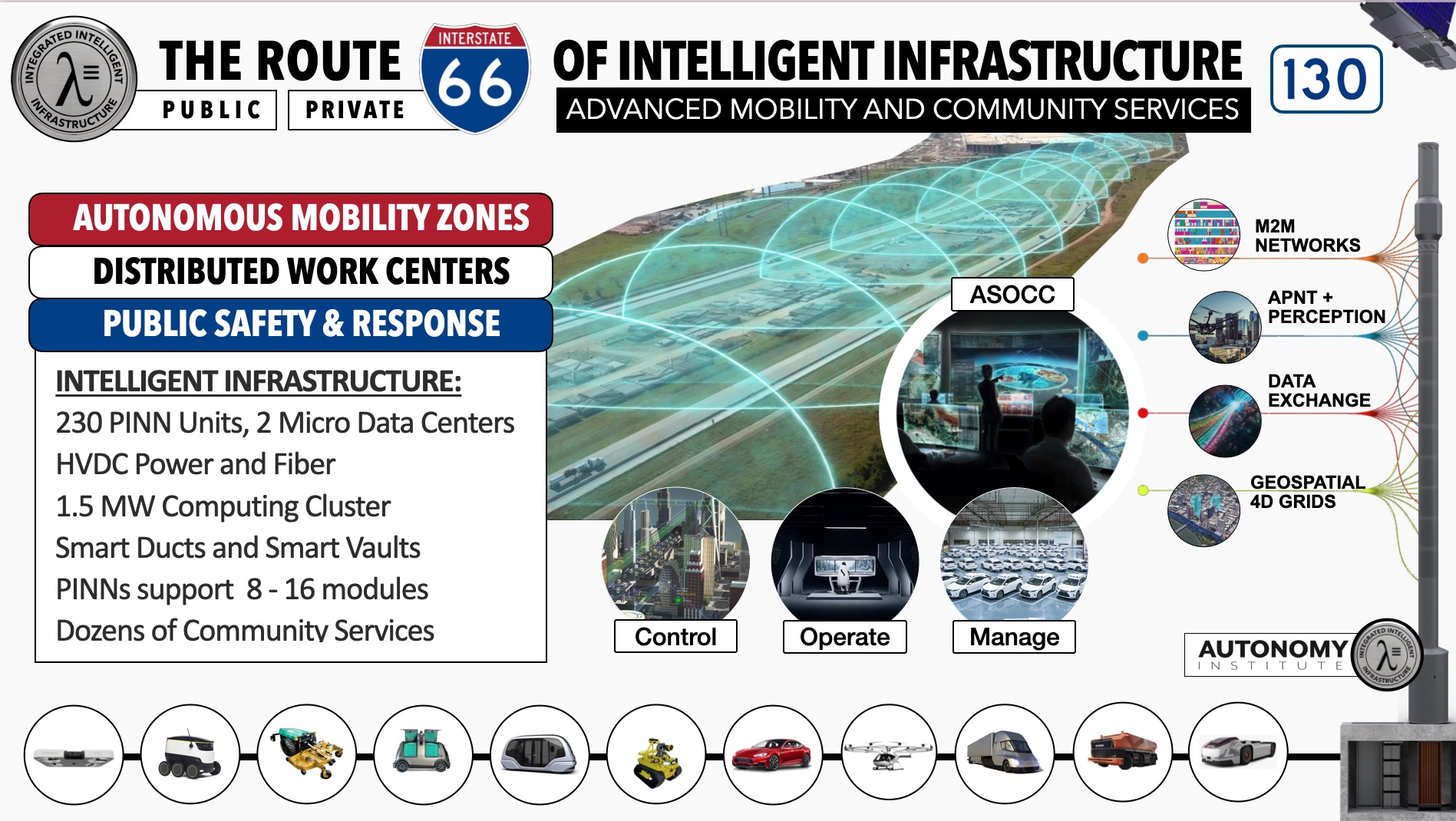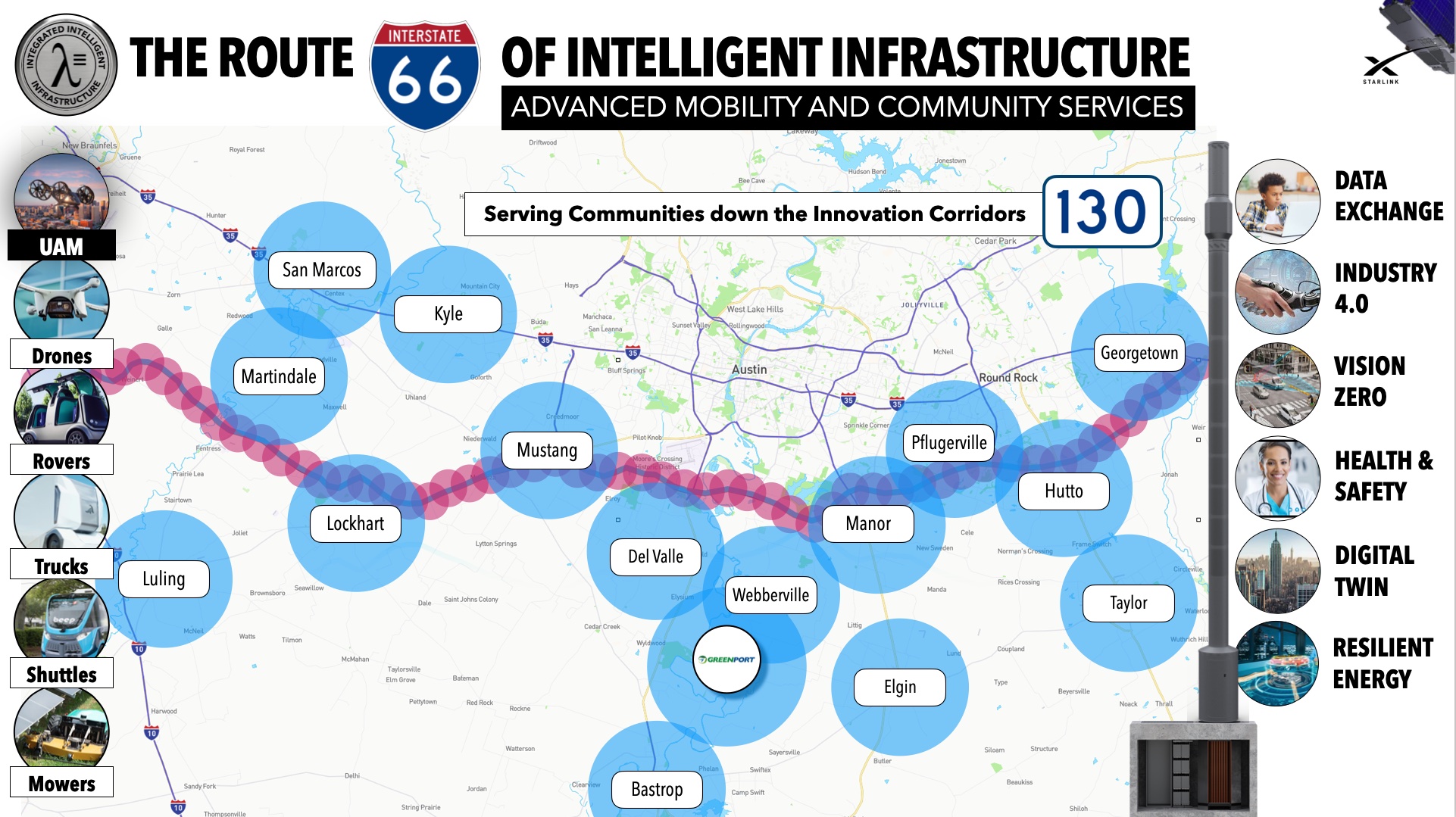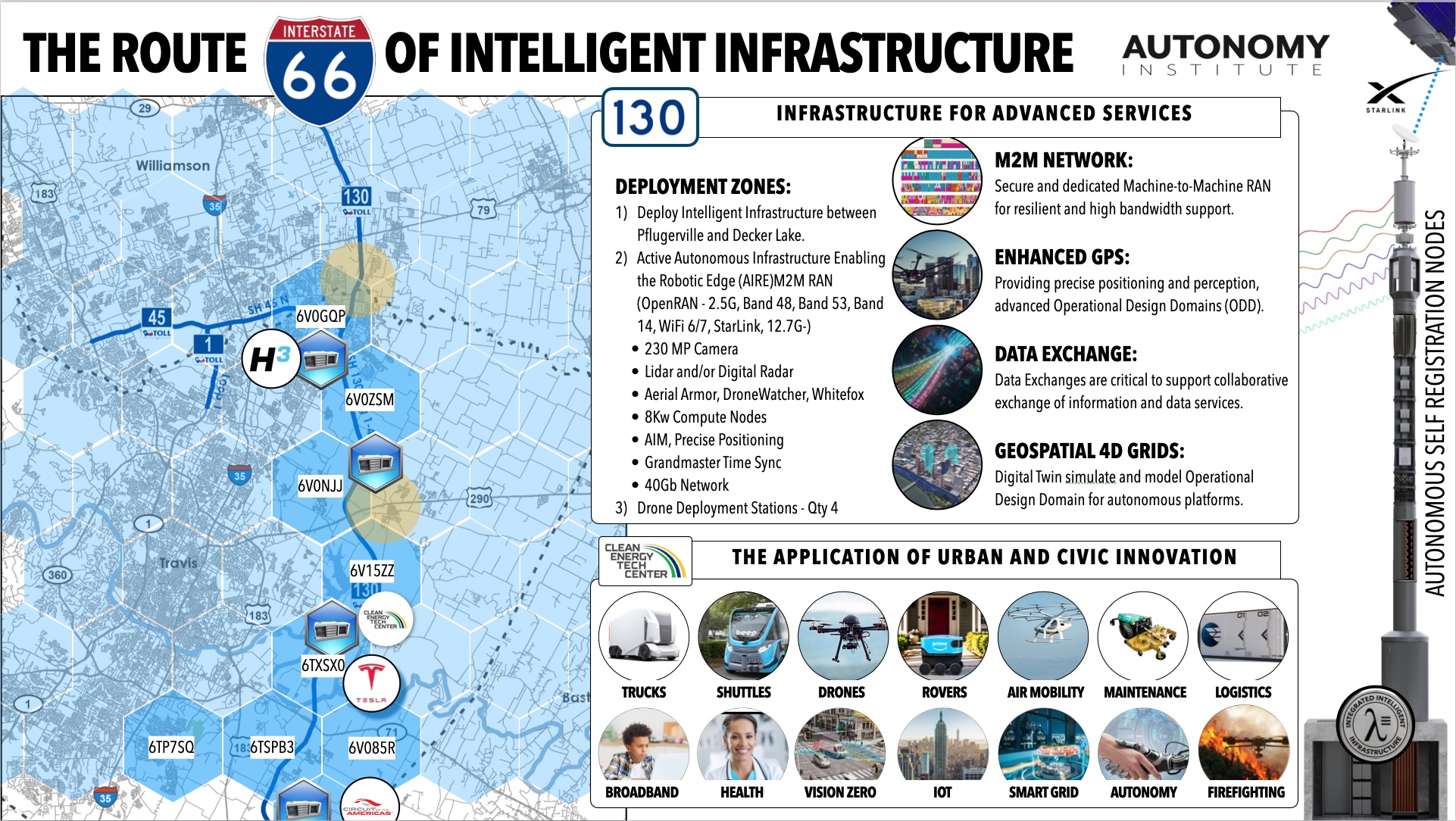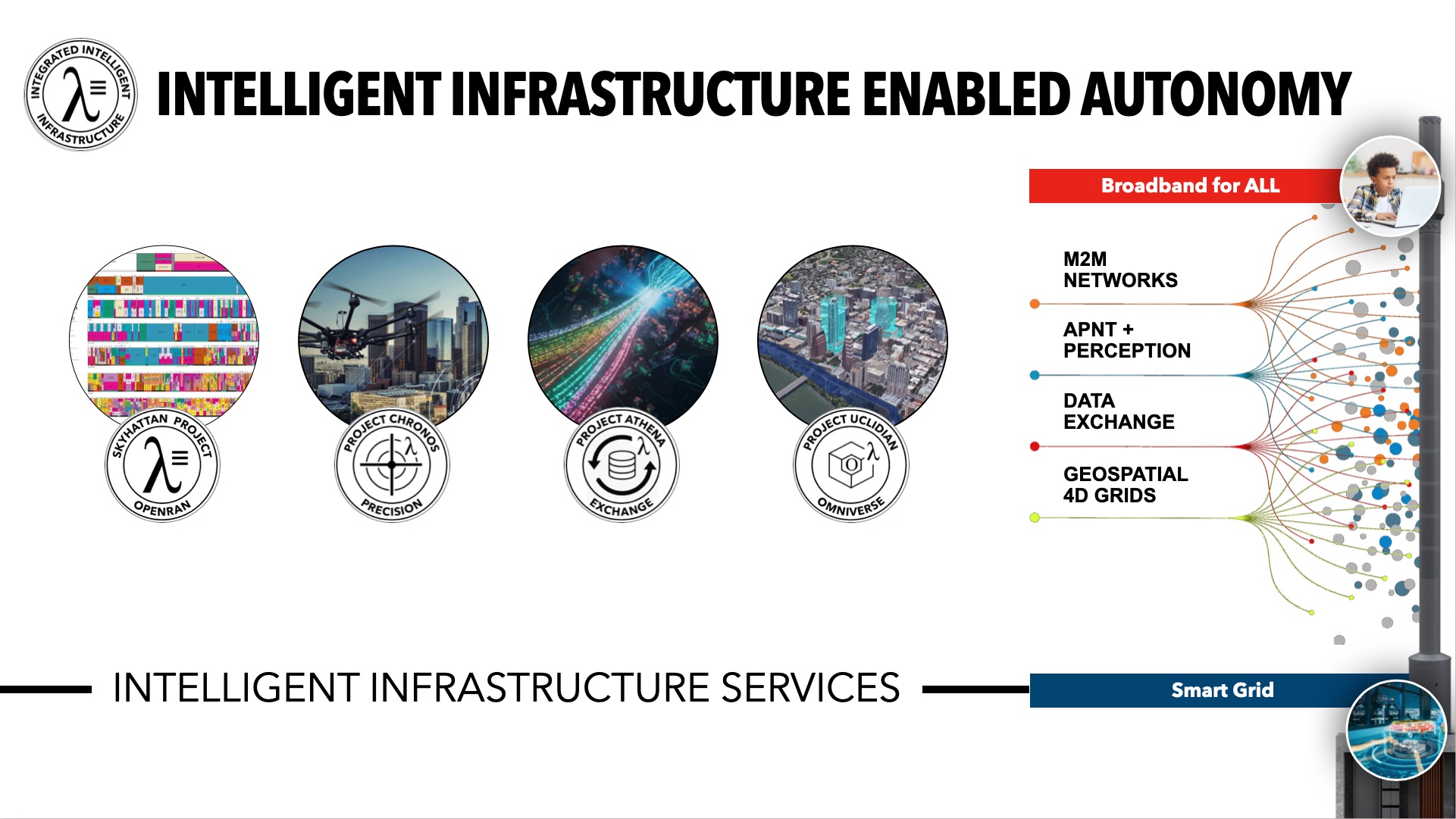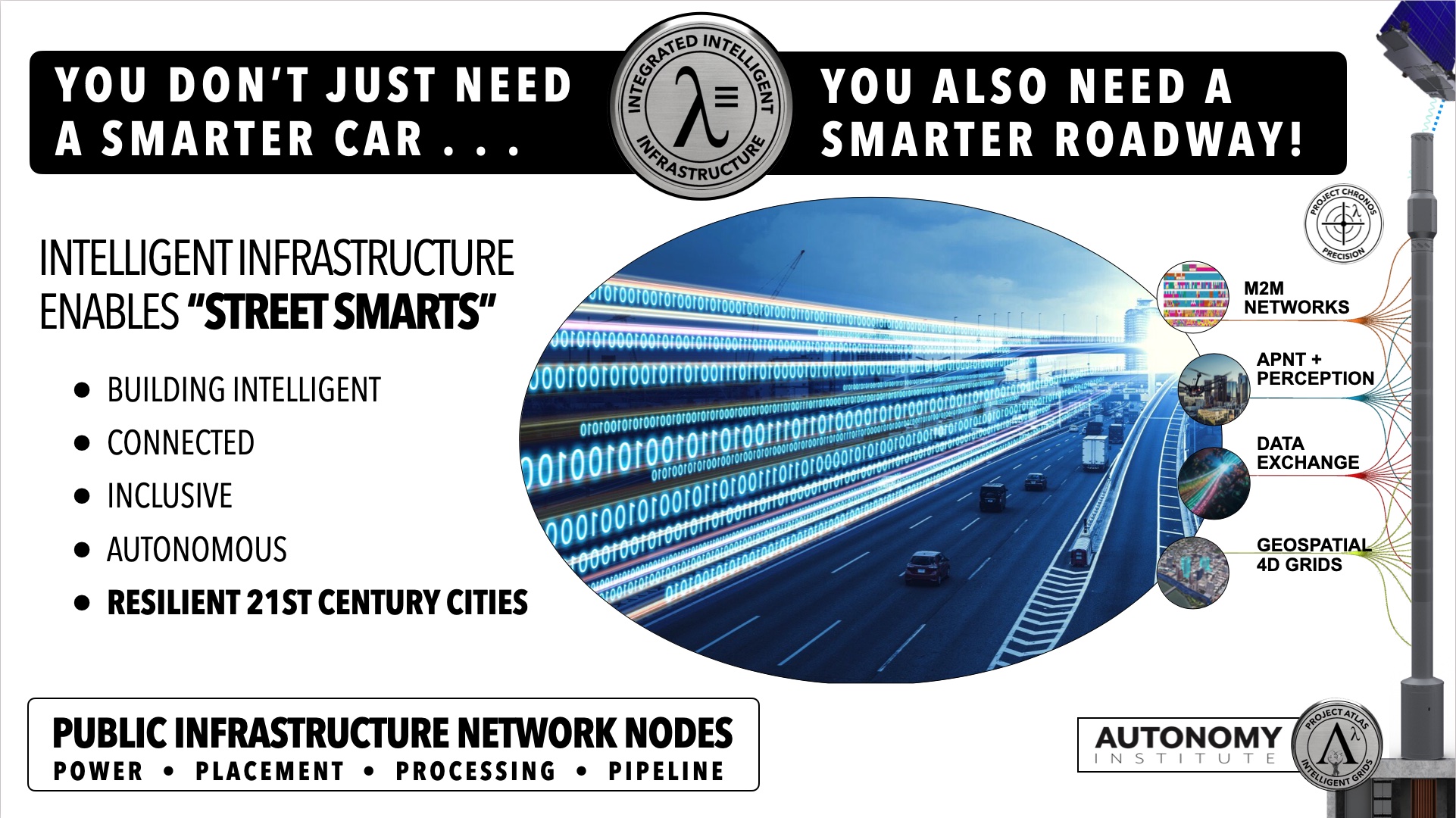THE INTELLIGENT, AUTONOMOUS & ELECTRIFIED CORRIDORS
Infrastructure is our First Order Priority
Norm Anderson, Chairman and CEO of CG/LA Infrastructure
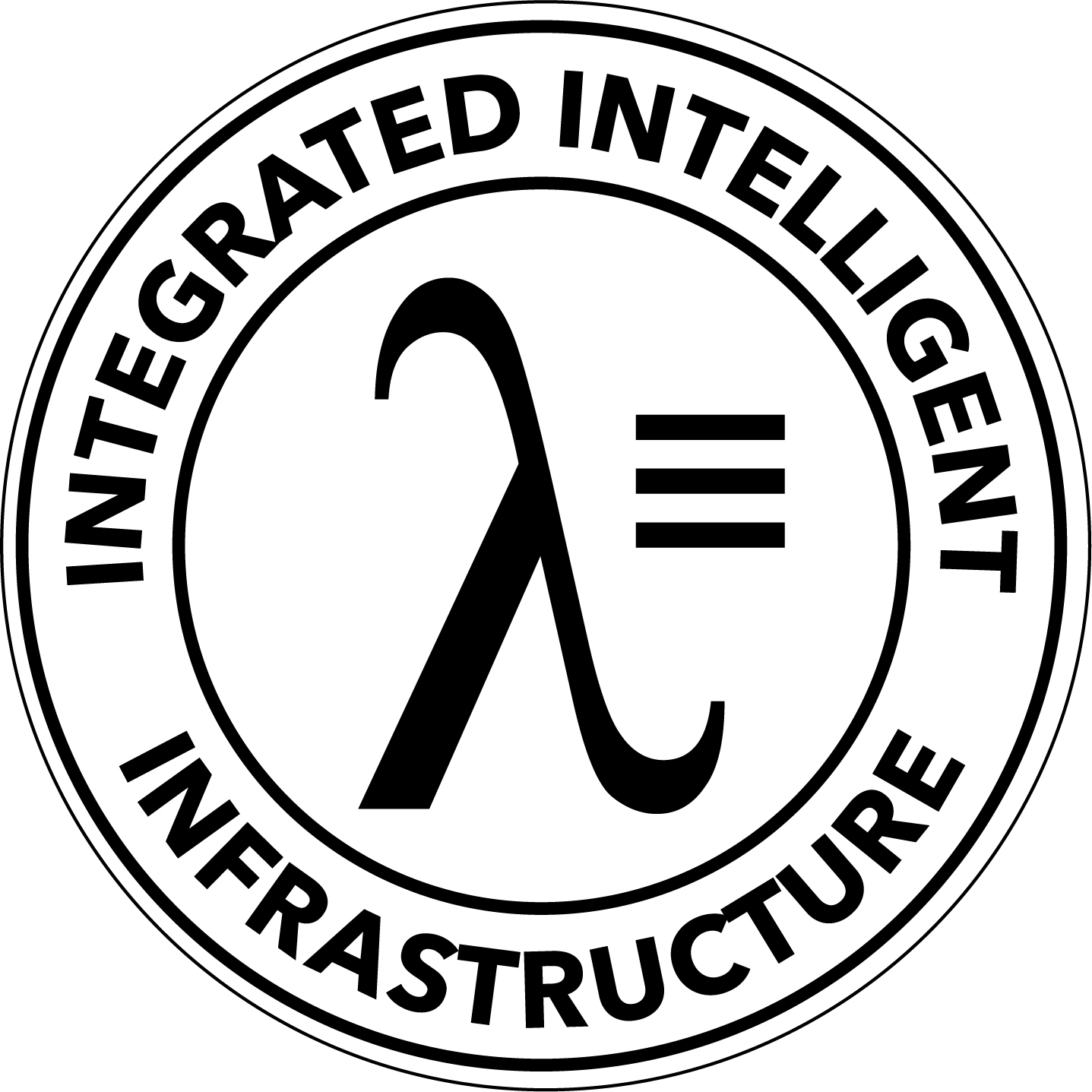
INTELLIGENT INFRASTRUCTURE
SH130 will be one of the first Intelligent, Autonomous, and Electrified Corridors in the Nation. The Autonomy Institute is collaborating with Texas cities and agencies on the 90-mile Texas SH-130 corridor. This intelligent corridor will support automated freight and delivery; intelligent and autonomous vehicles; and advanced services to communities along the corridor. This Intelligent Infrastructure will also eliminate the digital divide and accelerate Texas into the 21st century with jobs, economic growth, and stronger more resilient communities.
The Transportation industry will drive the deployment of the Intelligent Infrastructure that will enable Industry 4.0. Unleashing the largest productivity boom in world history and securing our national sovereignty.
“Investment in a 21st-century Intelligent & Autonomous Infrastructure is among the highest priorities for stimulating economic expansion, national security, and job growth.”
Intelligent Infrastructure Delivers:
-
VISION ZERO
-
BROADBAND ALL
-
OPTIMIZED MOBILITY
-
HEALTH & SAFETY
-
INTELLIGENT CITY
-
RESILIENT GRID
-
AUTOMATE SYSTEMS

Each Intelligent Corridor will activate PINN clusters to support edge computing, NextG, Broadband, and charging stations within regions that have been previously isolated or disconnected. The deployment will support near-term and long-term services to our communities. The SH130 Coalition is developing an integrated deployment plan for the entire 92-mile stretch the highway. The PINNs will support include broadband, advanced wireless, connected systems sensors, assured position-navigation-timing, charging infrastructure, edge computing, etc.
INTELLIGENT INFRASTRUCTURE
SOLUTIONS ENABLED BY INTELLIGENT INFRASTRUCTURE
M2M Network
INTELLIGENT INFRASTRUCTURESecure, Low-Latency, and Resilient
Machine 2 Machine Wireless Network
Data Exchanges
INTELLIGENT INFRASTRUCTUREHigh Performance GPU, and FPGA at Edge
Petabytes of Data Processing at the Public Infrastructure Network NodesPosition as a Service
INTELLIGENT INFRASTRUCTUREHigh precision positioning for Machine 2 Machine interactions
RESILIENT APNT – PRECISION, LOW-LATENCY, SYNCHRONIZATION
Geospatial 4D GRID
INTELLIGENT INFRASTRUCTUREActive Digital Twin providing detailed situational awareness
Simulating or modeling the real-world in an operational view.
Project Omniverse
Project Skyhattan
Project Chronos
VOICES, CARMA, DRF, OPENRAN
Project AIRE
Project ATHENA
Project COMMERCE
LEADING DEPLOYMENT PARTNERS
This includes compute, network, wireless, fiber, engineering, electric, cloud, intelligent transportation, micro weather, data exchanges, and many others.
ESTABLISHING NATIONAL STANDARDS
The Autonomy Institute is accelerating the “Path to Commerce” by embracing national standards for commercial operations. The Systems of Systems complexity of autonomy will require the integration of many devices and services. Standards are critical for the the United States adoption of the Intelligent Infrastructure that will enable Industry 4.0.
THE FUTURE WITH INTELLIGENT INFRASTRUCTURE
Your Content Goes Here
INTELLIGENT & AUTONOMOUS OPERATIONAL SYSTEMS
PLATFORMS TO ACCELERATE R&D
CARMA℠ is a USDOT initiative
Developed by the Federal Highway Administration (FHWA), the CARMASM Program uses a multimodal approach to encourage collaborative research on the technology, open source tools, and frameworks poised to improve transportation system mobility, safety, and efficiency.
The CARMA Program is leading research on cooperative driving automation (CDA), leveraging emerging capabilities in automation and cooperation to advance transportation systems management and operations (TSMO) strategies.
NASA Data Reasoning Fabric (DRF)
Transportation shapes society, enabling social interactions and economic opportunities. Advanced Air Mobility offers the promise of on-demand air transportation for people and cargo that can dramatically increase the capacity of our transportation system reducing delays, reducing the impact on the environment and improving the quality of modern life. To keep these air vehicles operating safely in close quarters thousands, if not millions of decisions will need to be made in the vehicles, on the edge and in the cloud. Decision making by either humans or machines can only occur with current, accurate and secure data. Diverse and dynamic data on the status of travelers, cargo, weather, ground infrastructure, flight infrastructure and vehicles are needed wherever these decisions are made. Privacy, noise and safety constraints must also be available to achieve this. We must enable a shift to a web-like ecosystem to support Advanced Air Mobility – a data and reasoning fabric or DRF.
Learn more: https://www.nasa.gov/feature/data-reasoning-fabric-drf
The Autonomy Institute is accelerating the “Path to Commerce” for connected and autonomous systems. We are moving quickly on establishing a number of Autonomous Infrastructure GRIDS and Autonomous Mobility Corridors.
Progress is dependant on petabytes of data being captured by tens of thousands of mission profiles. The Intelligent infrastructure will support accelerated capture of the critical data required to ensure safe, resilient, and scaled autonomous systems.
Time for us to accelerate our OODA Loop. Observe, Orient, Decide, Act.
INTELLIGENT INFRASTRUCTURE ADVISORS & PARTNERS


